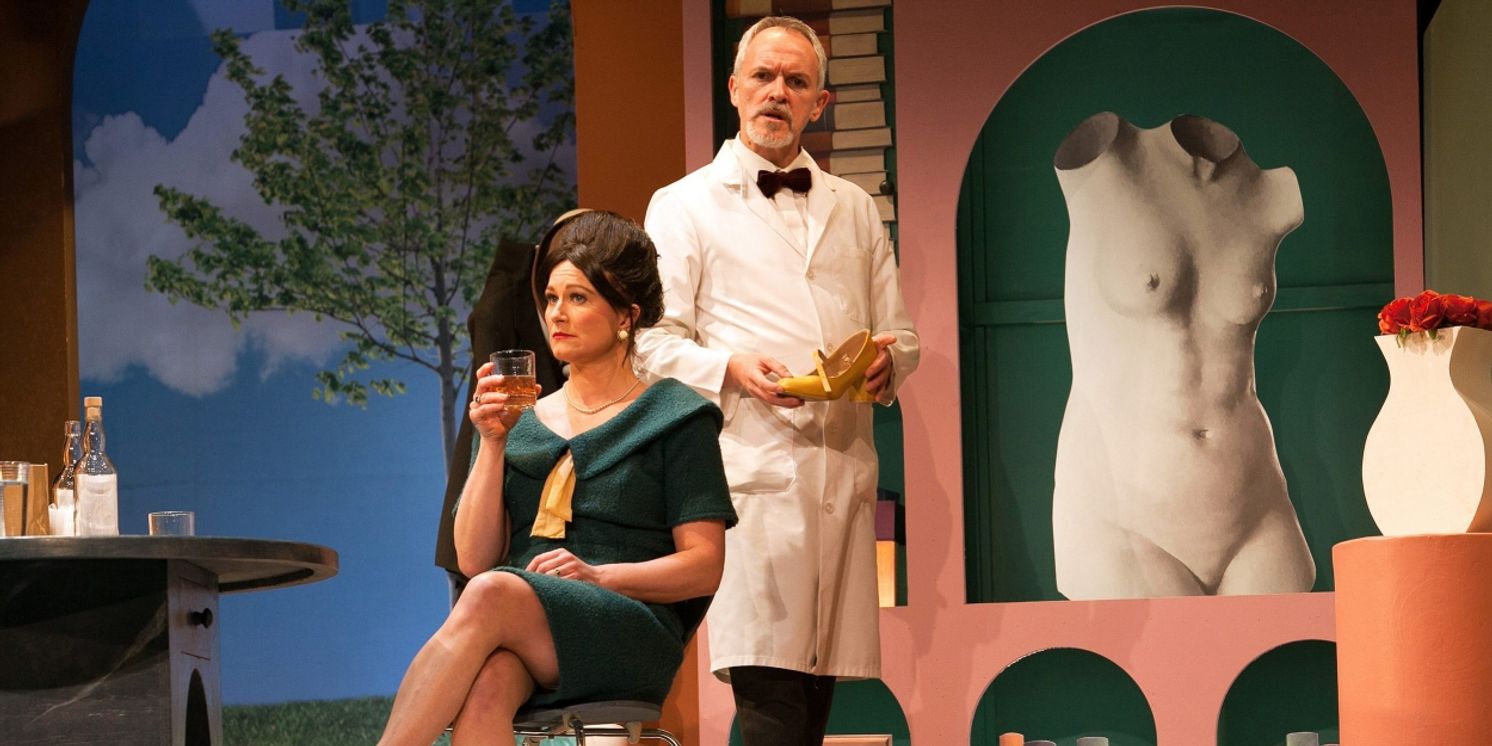Review: WHAT THE BUTLER SAW, Theatre Royal Windsor
Joe Orton's classic farce still packs a punch over half a century on

 There are few sights more toe-curling than a middle-aged white man attempting to mansplain why #MeToo doesn’t count in this case because it’s of its time/of its genre/doesn’t matter that much anyway. So I shan’t say any more, other than to note that the Trigger Warning notice could be a lot longer and that Joe Orton himself would have scribbled all over it.
There are few sights more toe-curling than a middle-aged white man attempting to mansplain why #MeToo doesn’t count in this case because it’s of its time/of its genre/doesn’t matter that much anyway. So I shan’t say any more, other than to note that the Trigger Warning notice could be a lot longer and that Joe Orton himself would have scribbled all over it.
Orton was, until he most definitely was not at his hideous death, in the right place at the right time. Music had The Beatles, film had Michael Caine and theatre had its Leicester-born working class iconoclast, ready to deface a library book and tear up the rule book. Orton’s star burned brightly, but briefly, gone at 34, murdered, with his work living on, softened for prime time, but clearly visible in The Two Ronnies, in The Kenny Everett Video Show and, today, in Jimmy Carr’s stand up.
One might call What The Butler Saw his last testament, completed in 1967 in Tangiers (best not to look too closely at his holiday relaxations), a ferocious spit in the eye of The Establishment already reeling from the satire boom, but here under full-frontal assault from an angry pen. That said, Orton was never satisfied with just punching up: he punched sideways and down too and, though one would like to say that the now revered figure of the English Stage had his heart in the right place, he didn’t really. Orton, to his credit, never did politics and never did sentimentality - had he lived, he would never have been a national treasure.
What he could do in a voice that sears across the decades, is write. Director, Michael Cabot, recognises that and choreographs his accomplished cast with great skill, never allowing the outrageous comings and goings dissolve into pantomime, bringing out the play’s rock-solid armature that is the foundation of any farce. Sure it’s exaggerated, anarchic and ludicrous, but it always has one foot in the credible. It’s not impossible that all this stuff could happen - YouTube and even the dullest of news websites are full of wholly inconceivable events that happen every day.

We open on a consulting room (beautifully realised by designer, Bek Palmer) in an institution for the mentally ill in which Doctor Prentice is interviewing Geraldine Barclay for the position of secretary. John Dorney channels plenty of Leslie Phillips as the randy doctor, but, as things really start to unravel, he becomes something of a Yossarian figure, a sane man railing against a mad world. Alana Jackson is the dolly bird dumb blonde, clothes on and off, trying to maintain dignity against terrifying odds. You long for her to have just a tiny bit more agency, but see paragraph one above.
Jack Lord has enormous fun with Doctor Rance, the government inspector who reminded me of Wilhelm Reich, the sex-obsessed psychoanalyst who mixed genius and madness. In the zealotry of an unhinged man high on his own supply of power, there’s just a hint of how anyone subject to regulatory bodies views those charged with enforcement.
Could Orton, out and proud when that was a very dangerous thing to be, write women. Not on the evidence here. Holly Smith does all she can with the role of Mrs Prentice, the boozy, nymphomaniac wife who… well, there is much to add because that’s the part.
Alex Cardell and Jon-Paul Rowden have a little more to do as the horny hotel porter and incompetent bobby caught in the whirlwind that overtakes them, in and out of clothes, some men’s, some women’s, trying to do the right thing and both shot (not fatally) by the end. They’re very good, but we’ve seen them before in every Bank Holiday Carry-On.
For all that equivocation above, there’s much to admire between the wincing. Comedy is always more than the sum of its parts, its alchemical structure collapsing instantly under analysis. Far better to marvel at the technique on show - countless entrances and exits delivered with supreme precision, laughlines timed to the millisecond, props in exactly the right place at the right time. Okay, it’s professional theatre, they should get that right, but it’s still a marvel to behold.
Is What The Butler Saw a museum piece? In one sense, it is, far more recognisable to those of us who grew up with Benny Hill leering at the camera, women a third his age on each arm. In another, it’s a scream for freedom in a country in which a sitting MP can question the equality of gay and straight relationships, where the hypocrisy of the church against which Orton railed has been shown to run even deeper than he suspected and tedious culture wars rage on the front pages of newspapers, unavoidable in supermarkets and petrol stations.
The wild boy of English theatre wouldn’t say the same things these days in the same way, but he’d have plenty of targets to aim at and I’m pretty sure he’d hit them.
What The Butler Saw at the Theatre Royal Windsor until 11 May and on tour until 27 July
Photo images: Shelia Burnett
Reader Reviews
Videos

